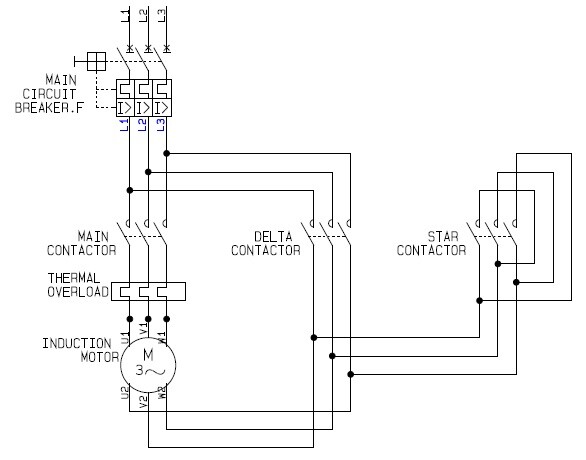Reduced Voltage Starters (Soft-starts) – Applications and Benefits
Recent posts have dealt in detail with variable speed drives and their application, but there is another method of motor control capable of providing electrical and mechanical benefits at a lower capital cost – the reduced voltage starter. The three most common types of reduced voltage starter are:
- Wye/delta: this starter consists of three contactors – main (for isolation); wye (lower voltage for start); and delta (higher voltage for run) – which provides for initial starting of the motor via a wye (“star”) connection, then a timed transition to a “delta” connection to produce motor full-rated speed. The wye connection provides for 58% of line voltage (V-line/1.73) across each winding, and since current varies as the square of the voltage and torque is proportional to current, current and torque are reduced to 33% during starting. A simple schematic is below:
- Auto-transformer: in this method, an autotransformer supplies the motor via adjustable tap settings (typically 50%, 65%, and 80% of line voltage). This results in reduction in current at the motor terminals by the […]


